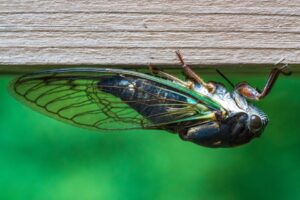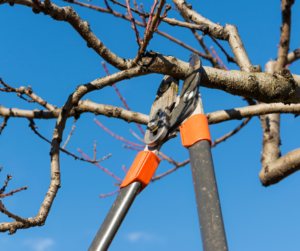
Spring has an elegant way of ushering in a season of renewal and awakening, often bursting with color and the sounds of new life.
A tale as old as time and as true as it ever was: “The early bird catches the worm.” However, this year, Mother Nature seems to have added a little pep to her step.
Perhaps lately you’ve found yourself saying, “Wow, my property is unseasonably colorful.”
Or maybe even “Look at how many trees and flowers have already bloomed, it’s like looking at a Bob Ross painting!”
As we take a moment and marvel at the beauty unfolding around us, the different scents and flavors dancing in the breeze, ILT Vignocchi wants to remind our fellow community members to be aware of the implications of “premature blossoming.”
The early warm-up followed by the late frosts ahead poses unique challenges for property owners, so let’s dive in!

THE FASHIONABLY “LATE FROST”
A unique obstacle, commonly known as a “late frost,” occurs when temperatures drop below freezing after the growing season has already begun. This phenomenon happens during the transitional period, when plants start to emerge from dormancy and new growth has begun. “Late frosts” cause ground temperatures to plummet when cold air masses settle into the area as the heat radiates away from the ground.
EARLY BULB VULNERABILITY
Rest assured that early-blooming bulbs are more robust than they appear. Tulips, daffodils, and other spring blooms are hardier than we give them credit for. Despite the threat of frost, these resilient plants are unlikely to suffer permanent damage. However, a layer of mulch or covering can provide added protection during sudden cold snaps, ensuring your foliage remains intact.
BROWNING TIPS, IS IT DYING?
While we’re on the topic of hardiness, frost may cause a slight browning of foliage tips, but it’s nothing to fret over. This natural process, known as “frost damage,” is temporary and poses no significant harm to the plants. So, if you wake up to a frost-covered garden, take a deep breath and trust in nature’s resilience.
SOME PLANTS WEAR ARMOR
The dance between winter and spring is epitomized by the magnolia tree. Its fuzzy flower bud covering acts as a protective shield, guarding the delicate petals. However, once this “blanket” falls away, the flowers on the magnolia tree become vulnerable to sudden changes in temperature. While some petals may be lost to a late frost, the magnolia as a whole endures.
COMPETITION IS THICK
Early warming temperatures can accelerate weed growth, competing with desirable plants for nutrients and space. Implementing weed control measures can suppress weed growth and preserve the aesthetic appeal of your property.
NUTRIENT DEFICIENCIES
Early-blooming plants may exhibit signs of nutrient deficiencies due to imbalanced soil conditions or inadequate fertilization. This occurs because of the constant change in rapid heating and cooling of soil temperatures, which causes water to expand and contract. A targeted fertilization program can correct nutrient deficiencies and promote healthy plant growth.
While the early bloom may present challenges, we hope you feel assured about what lies ahead.
If you are a current landscaping maintenance client, you already know that your team here at ILT Vignocchi is staying on top of this and will be implementing the measures necessary to safeguard your property.
And as you navigate the ebbs and flows of Mother Nature, remember that ILT Vignocchi is here to help guide and support you every step of the way. Our expertise in landscaping design, build, and maintenance ensures that your outdoor spaces remain vibrant and aesthetic year-round.
You can embrace the early bloom and trust in the beauty of nature’s timing, knowing ILT Vignocchi is just a call away.
If you’re ready to uplevel your outdoor space or hand off the maintenance to a trusted industry expert, call us at 847.487.5200 (ext: 2220) for a consultation, or send a message our way to get started!














